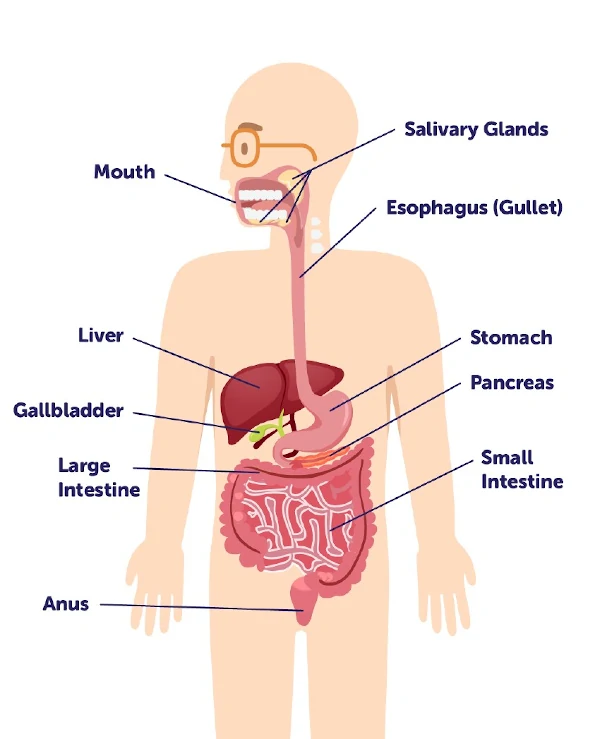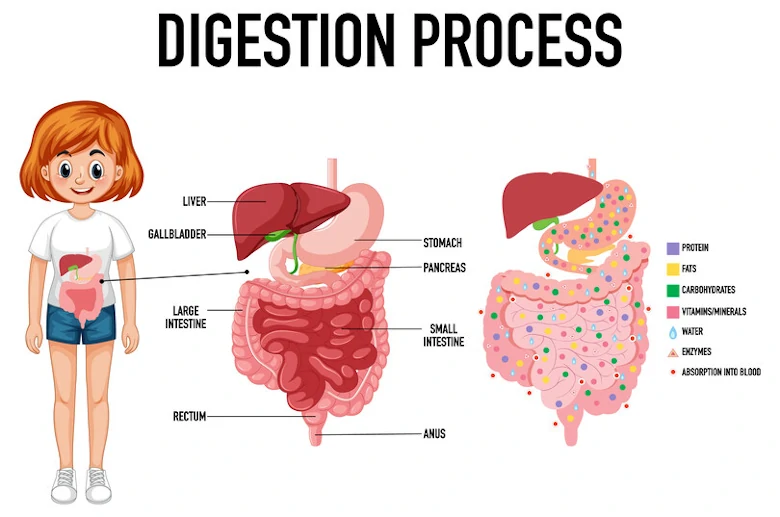Magnets
In this article, you will learn about magnets according to the Singapore Primary 3 Science Syllabus. At the end of the article, you will be able to recognise the characteristics of magnets and describe the different methods to make magnets.
Watch our video lesson!
Note: This video lesson on Magnets is just one of the many weekly GenieClass lessons you can attend from the comfort of your home. If you prefer learning in a physical classroom, check out our new tech-enhanced tuition classes at Geniebook CAMPUS.
Magnet
A magnet is an object that can attract things that are made of magnetic materials. There are four magnetic materials: iron, steel, nickel\(\color{red}{\Large{^{\star}}}\) and cobalt\(\color{red}{\Large{^{\star}}}\).
\(\color{red}{\Large{{\star}}}\) Do take note that nickel and cobalt are not tested in the syllabus.
Magnets can be classified into two groups: natural magnets and man-made magnets. Natural magnets are lodestones that are made of magnetite while man-made magnets are made from magnetic materials.
Man-made magnets are often made into different shapes and sizes.
Examples:
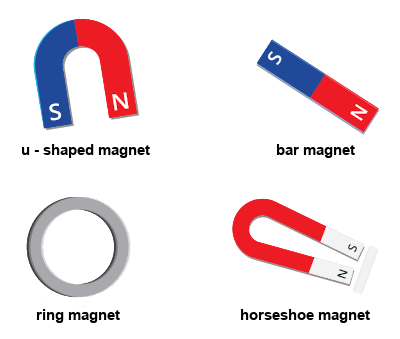
Characteristics Of Magnets
A magnet has two poles: North pole and South pole. The poles of a magnet have the strongest magnetic force while the centre of a magnet has the weakest magnetic force.

A magnet can attract magnetic materials but cannot attract non-magnetic materials. A freely suspended bar magnet always comes to rest in the North-South direction.
Magnetic Force Of Repulsion
The same poles of two magnets are known as like poles. When the like poles of two magnets are facing each other, the two magnets push each other away.
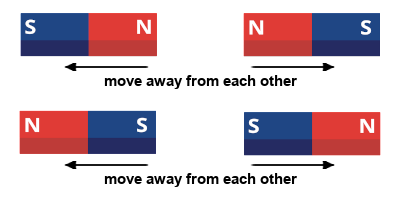
Magnetic Force Of Attraction
The opposite poles of two magnets are known as unlike poles. When the unlike poles of two magnets are facing each other, the two magnets pull towards each other.

How to make magnets?
Magnetic objects can be made into magnets with the following methods:
- ‘Stroke’ Method
- ‘Electrical’ Method
Stroke Method

Use a bar magnet and stroke an iron bar continuously for at least 20 times. The stroking must be done in one direction from one end of the iron bar to the other end of the iron bar with the same pole of the magnet.
The stroking method will only produce temporary magnets. These temporary magnets will lose their magnetism after some time. The strength of the temporary magnet depends on the number of strokes. As the number of strokes increases, the strength of the temporary magnet increases.
Electrical Method
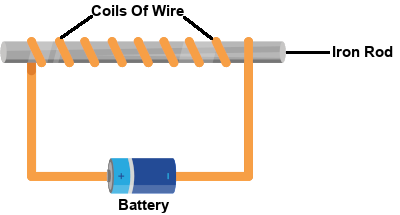
Wind a copper wire around an iron bar around 30 times. Connect one end of the wire to the negative terminal of the battery and the other end to a switch that is connected to the positive terminal of the battery.
When the switch is turned on, electricity flows through the wire and the iron bar becomes an electromagnet. When the switch is turned off, no electricity flows through the wire and the iron bar is no longer magnetised.
The strength of an electromagnet depends on the number of batteries used and the number of coils of wire around the iron bar. The strength of an electromagnet increases when the number of batteries used and/or the number of coils of wire around the iron rod increases.
Conclusion
In this article, we learnt that a magnet has two poles: North pole and South pole. We also learnt that the like poles of two magnets move away or repel when they are facing each other while the unlike poles of two magnets move towards each other when they are facing each other. The stroke method and the electrical methods are two methods on how to make magnets.
Test Yourself
Randy placed an object near a magnet. He observed that the object moved towards the magnet. Which one of the following materials is the object most likely made of?
Steel is a magnetic material and will be attracted to a magnet. Silver, rubber and copper are not magnetic materials and will not be attracted to a magnet.
Jean was given four rods A, B, C and D. She tested each rod with a bar magnet and recorded her observations in her notebook as shown below.

Which rod is definitely a magnet?
Only magnets repel each other when the like poles of the magnets are facing each other. Since rod A moves away from the North pole of the bar magnet, this shows that rod A is a magnet with the North pole of rod A facing the North pole of the bar magnet. As rod B did not move, this shows that rod B is a non-magnetic material and was not able to be attracted or repelled by the bar magnet. As both rods C and D are attracted to the bar magnet and there was no information to show that rods C and D are able to repel the bar magnet, this can only conclude that rods C and D are made of magnetic materials.
Harry conducted an experiment to find out how the strength of a magnet was affected by the number of times it was dropped. He dropped a magnet several times from a height of 5m and recorded the number of iron nails attracted to it in the table as shown below.

Based on the results above, what can Harry conclude from his experiment?
1. Dropping a magnet several times increases the strength of the magnet.
2. Dropping a magnet several times decreases the strength of the magnet.
3. As the number of times the magnet was dropped increases, the strength of the magnet increases.
4. As the number of iron nails attracted to the magnet decreases, the number of times the magnet was dropped increases.
As the number of times the magnet was dropped increases, the number of iron nails attracted decreases. This shows that the magnetic strength of the magnet decreases when the number of times it was dropped increaeases.
Gerald hung three magnets A, B and C from strings of different lengths as shown in the diagram below. Some iron pins were placed below the magnets and different numbers of pins were attracted to the magnets.
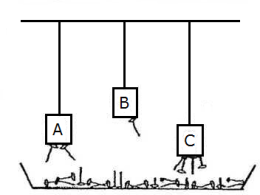
Based on your observation of the set-up above, could Gerald conclude that magnet C was the strongest magnet and why?
1. Yes. Magnet C attracted the most number of pins so it was the strongest magnet.
2. Yes. Magnet C was placed the nearest to the pins so it was the strongest magnet.
3. No. All the three magnets attracted different number of pins so it was not a fair test.
4. No. All the three magnets were placed at different distance from the pins so it was not a fair test.
To conclude which magnet is the strongest, all magnets have to be placed at the same distance away from the pins and the number of pins attracted to each magnet has to be taken into account to determine which is the strongest magnet.
The greater the number of pin attracted to the magnet, the stronger the magnet.
Even though magnet C attracted the most number of pins, we cannot conclude that magnet C is the strongest as magnet A and magnet B are placed further away from the pins.
The diagram below shows the distance from which four magnets E, F, G and H can attract the paper clips from a table.

Based on the above results, Harry made the following statements. Which statement cannot be determined based on the diagram only?
1. Magnet E is the weakest magnet.
2. Magnet F is the strongest magnet.
3. Magnet E is weaker than magnet G.
4. Magnet G is stronger than magnet H.
Option (1) is true, since magnet E is closest to the table but it attracted the least number of paper clips. It is therefore the weakest magnet.
Option (2) is not possible to tell because even though magnet F is furthest from the table, it did not pick up the most number of paper clips.
Option (3) is true because magnet E is nearer to the table than magnet G, but it picked up fewer paper clips than magnet G.
Option (4) is true because magnet G is further away from the table than magnet H and it picked up more paper clips than magnet H.




 SG
SG  VN
VN 
